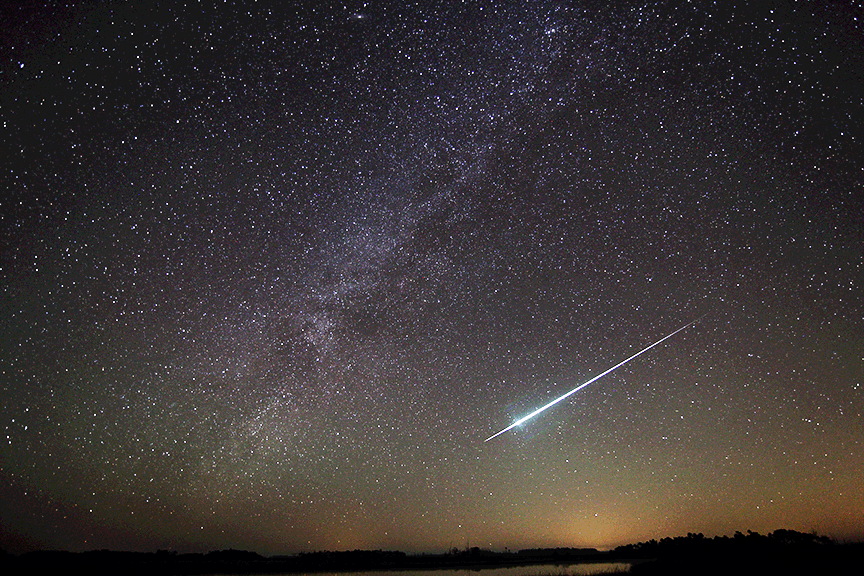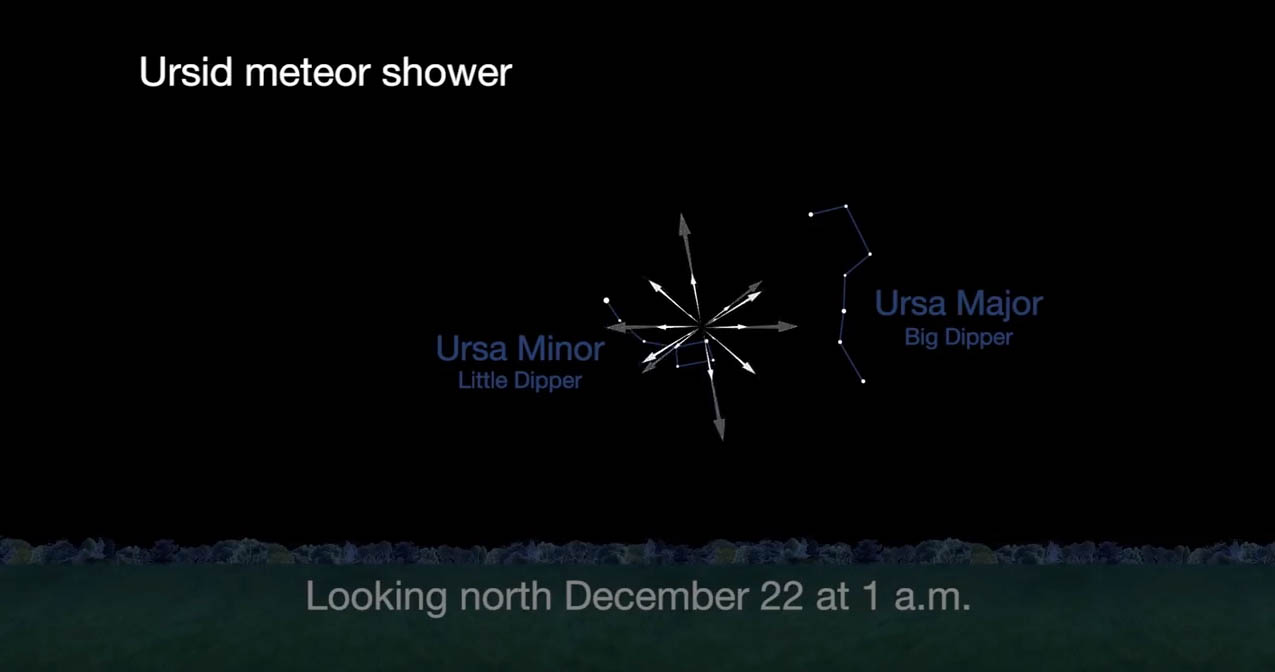The Ursid meteor shower of 2020 is peaking now! Here's what to expect.

We are only now coming down from the peak of the year for meteor enthusiasts: the Geminid meteor shower which reached a prolific maximum of 60 to 120 meteors per hour on the night of Dec. 13-14. But there is still one more meteor shower to consider before we close the book on 2020: the December Ursid meteor shower, which usually occurs during the overnight hours of Dec. 21-22.
The Ursids are so named because they appear to fan out from the vicinity of the bright orange star Kochab, in the constellation of Ursa Minor, the little bear. Kochab is the brighter of the two outer stars in the bowl of the Little Dipper (the other being Pherkad), that seem to march in a circle like sentries around Polaris, the North Star. But while the Geminids are at the top of most meteor watchers "must see" list, the Ursids are usually at the bottom and are usually given scant attention save for the most assiduous of meteor observers.
Related: Ursid meteor shower 2020: When, where & how to see it
Often neglected
The fact that Kochab is positioned so near to the north pole of the sky means that it nearly never sets for most viewers in the Northern Hemisphere. And since the Ursids seem to fan out from this particular region of the sky, means that you can look for these faint, medium-speed meteors all through the night if you care to. And this looks to be a reasonably good year to watch for them, since the first quarter moon will set around midnight on their peak night, assuring skies will be dark for the second half of the night.
These meteors are best seen during the last dark hour before dawn, when the radiant lies highest above the horizon in a dark sky. On the morning of maximum, hourly rates of between 5-10 Ursids may be seen. Plunging through the Earth's atmosphere 22 miles (35 km) per second, the Ursids produce mostly medium speed meteors. Very little activity will be seen away from the night of maximum activity.
The Ursids are a very poorly-observed Northern Hemisphere shower; that observers have neglected the Ursids is not surprising. Everything about them is wintry. They usually coincide with the winter solstice and are best seen by polar bears since they come from near the celestial north pole.
The shower's parent comet, from where these meteoroids originate, appears to be 8P/Tuttle, which circles the sun in a 13.6-year orbit and will return to the sun's vicinity in August of 2021. On occasion, planet Earth has interacted with a dense, narrow stream of particles shed by this comet, which has caused brief outbursts of Ursid meteors numbering in the dozens per hour, such as in 1945 and 1986; still others may have been missed due to widespread poor weather or simply because nobody bothered to look. Several lesser rate enhancements have been reported from 2006 to 2008, which might have been influenced by the relative proximity of Tuttle's comet. Slightly enhanced rates found in video data in 2014 and 2015 indicate that trying to forecast what this meteor swarm might do in a given year are difficult.
Breaking space news, the latest updates on rocket launches, skywatching events and more!
Related: How meteor showers work (infographic)

Enhanced activity in 2020?
Several highly-regarded meteor experts have examined the orbit of comet Tuttle and have suggested that Earth might encounter a few ancient dust trails shed by Comet 8P/Tuttle that possibly might enhance Ursid activity this year.
Esko Lyytinen and Peter Jenniskens predicted in the International Meteor Organization's 2020 meteor shower calendar that material shed by the comet in the years 815 and 829 (some 1,200 years ago) might interact with Earth between 12:27 and 1:10 a.m. EST (0527 and 0610 GMT). And earlier in the night, Japanese researchers Mikiya Sato suggests in that same document that the combination of two even earlier old trails from the years 719 and 733 might affect our planet between 10:15 and 10:40 p.m. EST (0315 and 0340 GMT) on Dec. 21.
Unfortunately, all this material has been out in space for some 13 centuries and has likely been widely dispersed and not likely to provide much of an increase in the nominal 5 to 10 per hour rates expected from the Ursids.
Still, if your skies are clear, you might want to step outside and check the northern sky. This might be a good excuse to try and end the year on a positive note.
Hey, you never know.
Joe Rao serves as an instructor and guest lecturer at New York's Hayden Planetarium. He writes about astronomy for Natural History magazine, the Farmers' Almanac and other publications. Follow us on Twitter @Spacedotcom and on Facebook.

Joe Rao is Space.com's skywatching columnist, as well as a veteran meteorologist and eclipse chaser who also serves as an instructor and guest lecturer at New York's Hayden Planetarium. He writes about astronomy for Natural History magazine, Sky & Telescope and other publications. Joe is an 8-time Emmy-nominated meteorologist who served the Putnam Valley region of New York for over 21 years. You can find him on Twitter and YouTube tracking lunar and solar eclipses, meteor showers and more. To find out Joe's latest project, visit him on Twitter.

